Tiny1C
The Tiny1C thermal imaging module (bolometer) by Infiray (or IRayTek - its been hard for me to understand the web of companies) is a small, low-cost, device like the Flir Lepton but with slightly higher resolution and faster frame rate.
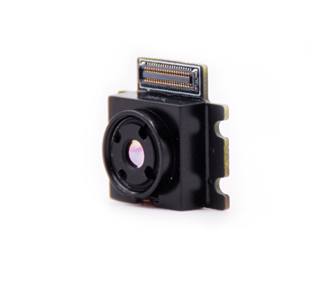
From its datasheet
- 256x192 or 160x120 pixel resolution (I'm using 256x192 pixel models)
- 2.0 F1.1, 3.2mm F1.1 or 4.3mm F1.2 lens (I've been using the 3.2 F1.1 lens)
- 12μm Wafer-Level Packaged (WLP) uncooled Vanadium Oxide (VOx) Uncooled Infrared Focal Plane Detector
- 8~14μm LWIR range
- <40mK @25°C Noise Equivalent Temperature Difference (NETD)
- 8-bit parallel DVP or SPI video interface (I'm using the SPI interface)
- I2C Command and Control interface
- 16-bit YUV422, 14-bit radiometric output or 10- or 14-bit raw data mode (I am using raw data mode)
- Built-in image processing pipeline (I'm using this to sharpen the image and perform AGC calculations)
- -15°C ~ 150°C (High Gain) or 50°C ~ 550°C (Low Gain) range
- +/- 2°C or 2% typical measurement accuracy
- Built in shutter for flat field correction (FFC)
- Typical 240 mW power consumption (600 mW during FFC)
Breakout Board (rev 2)
I designed a 1.25 x 1" (32x25.4mm) breakout board loosely modeled on the Lepton breakout board to expose the power, SPI and I2C interfaces. It also makes available the module's serial interface (which outputs some log info but otherwise seems un-useful) and some GPIO pins which seem currently unused.
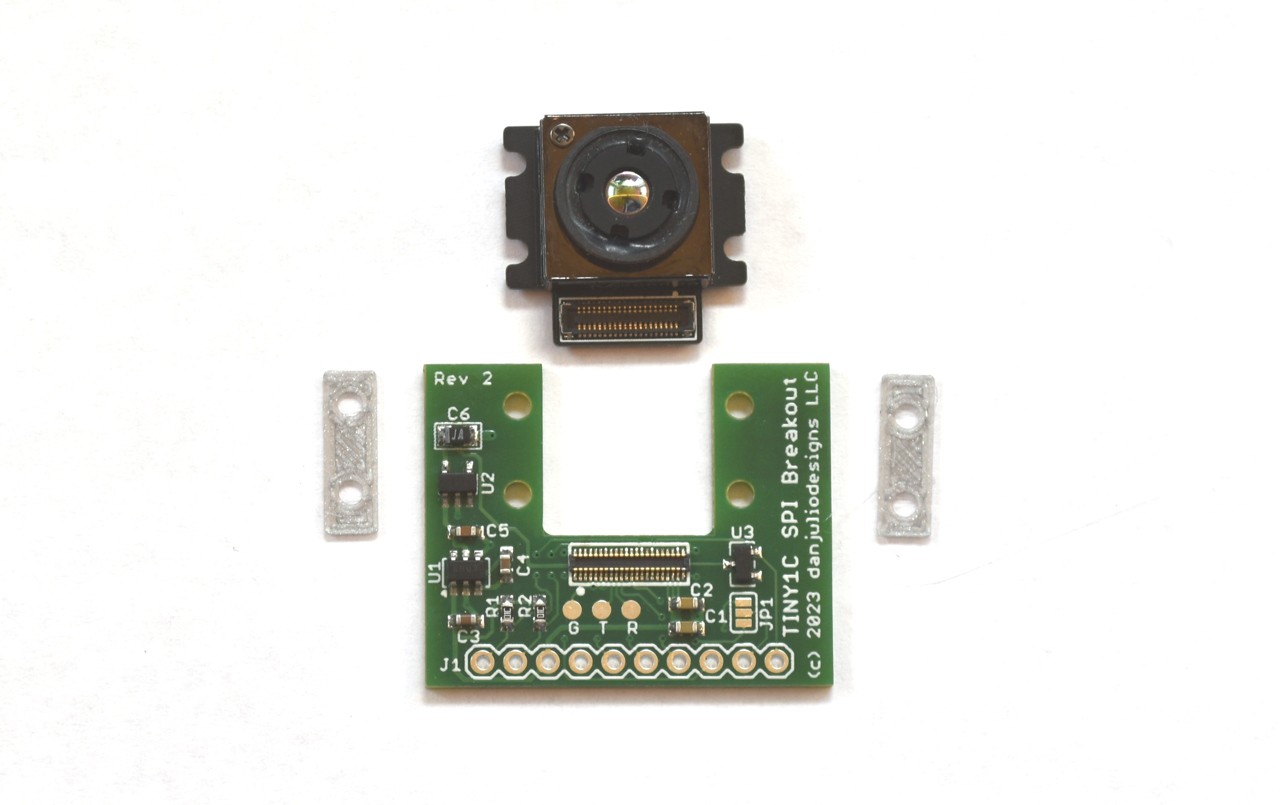
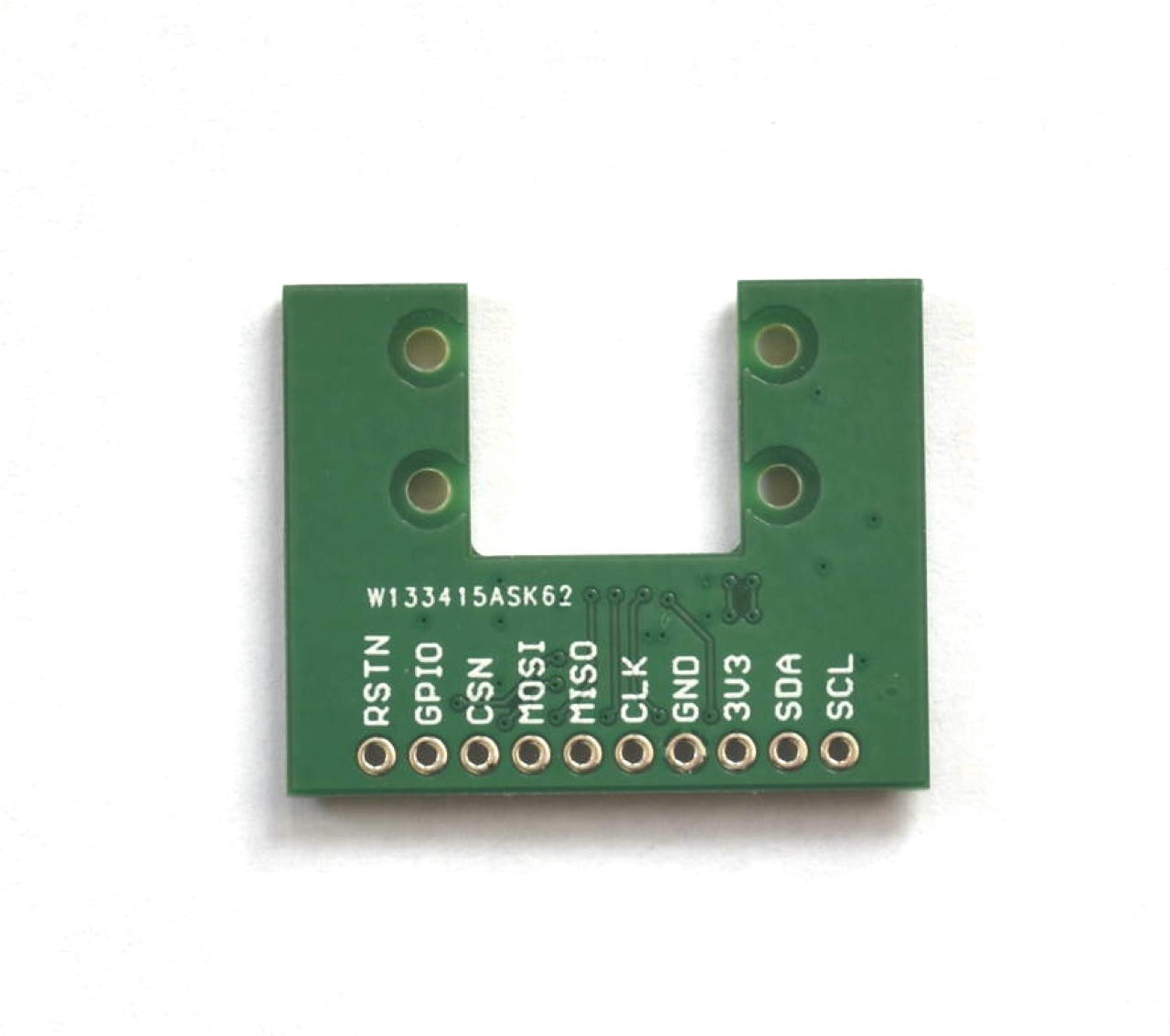
The Tiny1C requires a 3.3V logic power supply and a very low-noise 5V low-current analog supply. The breakout board uses a capacitive boost converter followed by a very low noise linear regulator to generate the 5V from the 3.3V supply. The breakout board also includes a power-on reset pulse generator which is also useful for the distance sensor (as I found out part-way through coding).
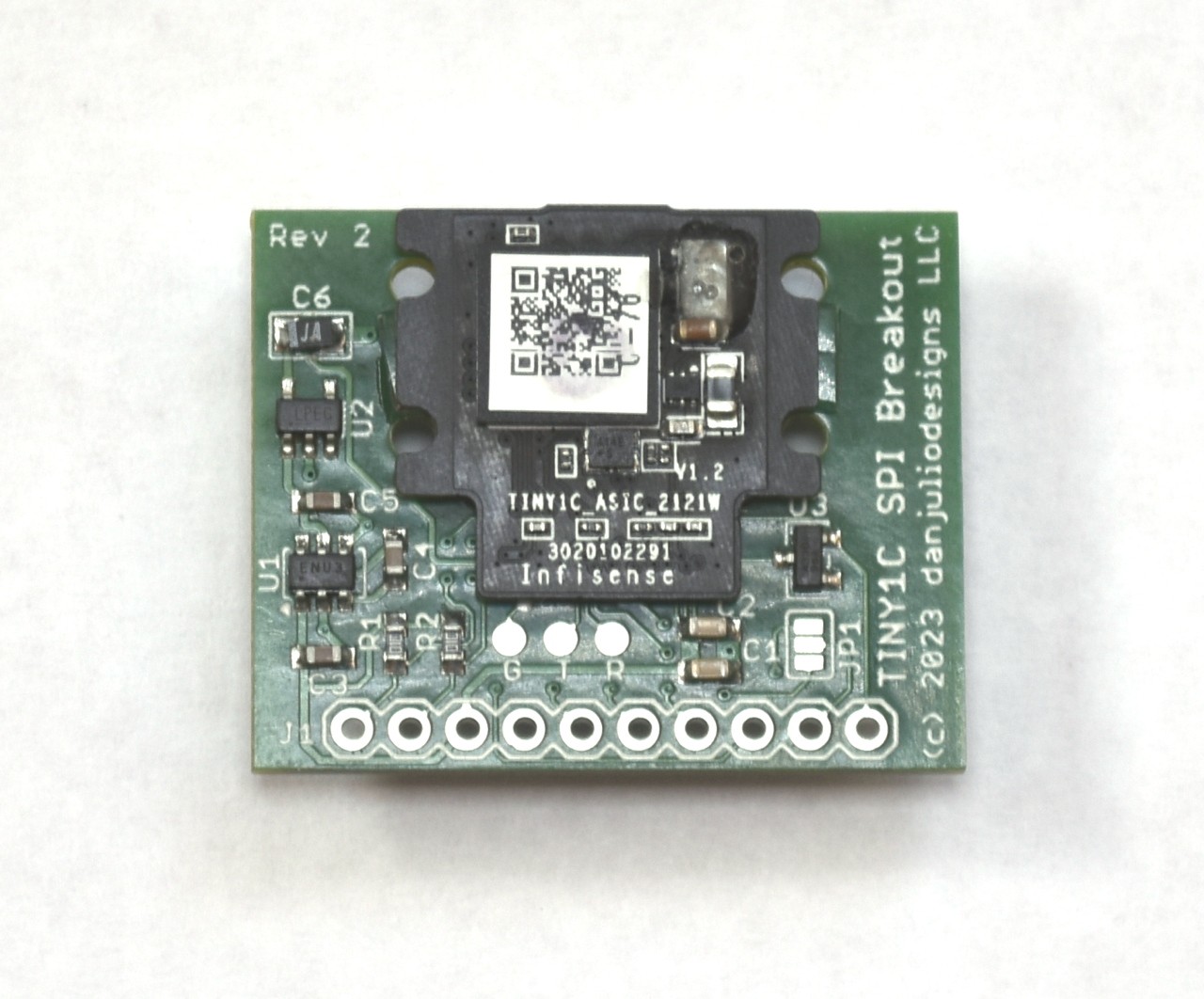
The Tiny1C connects using a very small press-fit connector and I designed a set of 3D printed shims to properly space the module from the board. I also use my favorite 3M double-sticky tape when I'm not screwing the breakout board into an enclosure or holder.
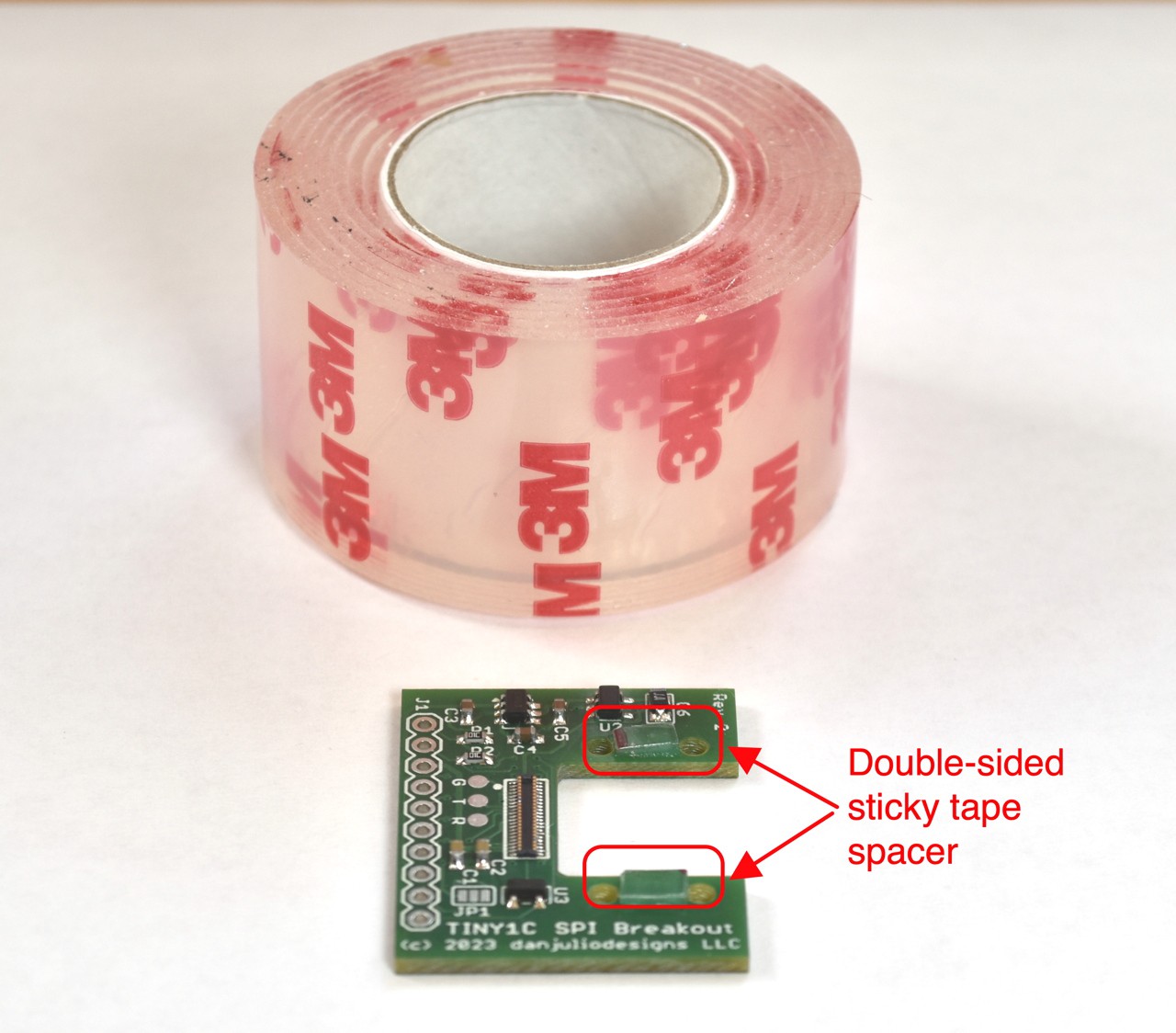
Some extras available (as of Nov 19 2024)
I have a few extra assembled boards that I can make available for pretty cheap (no Tiny1C modules). Contact me if you're interested. I'll delete this section once they're gone.
Breakout (rev 1)
The first version was a monster compared!
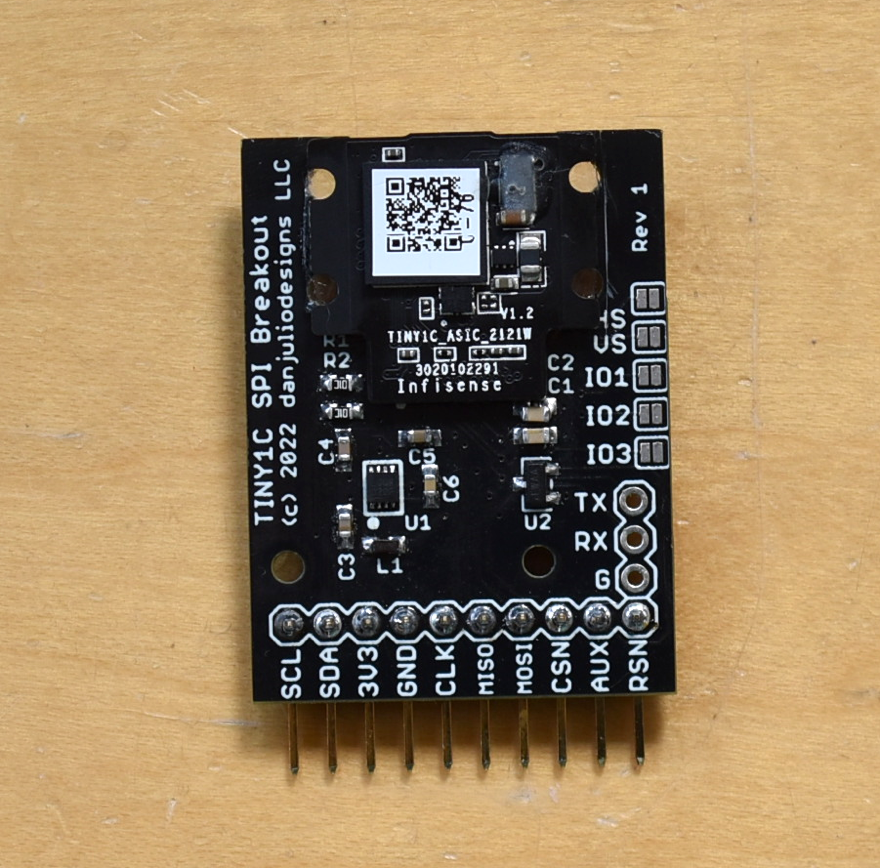
 Dan Julio
Dan Julio
Discussions
Become a Hackaday.io Member
Create an account to leave a comment. Already have an account? Log In.